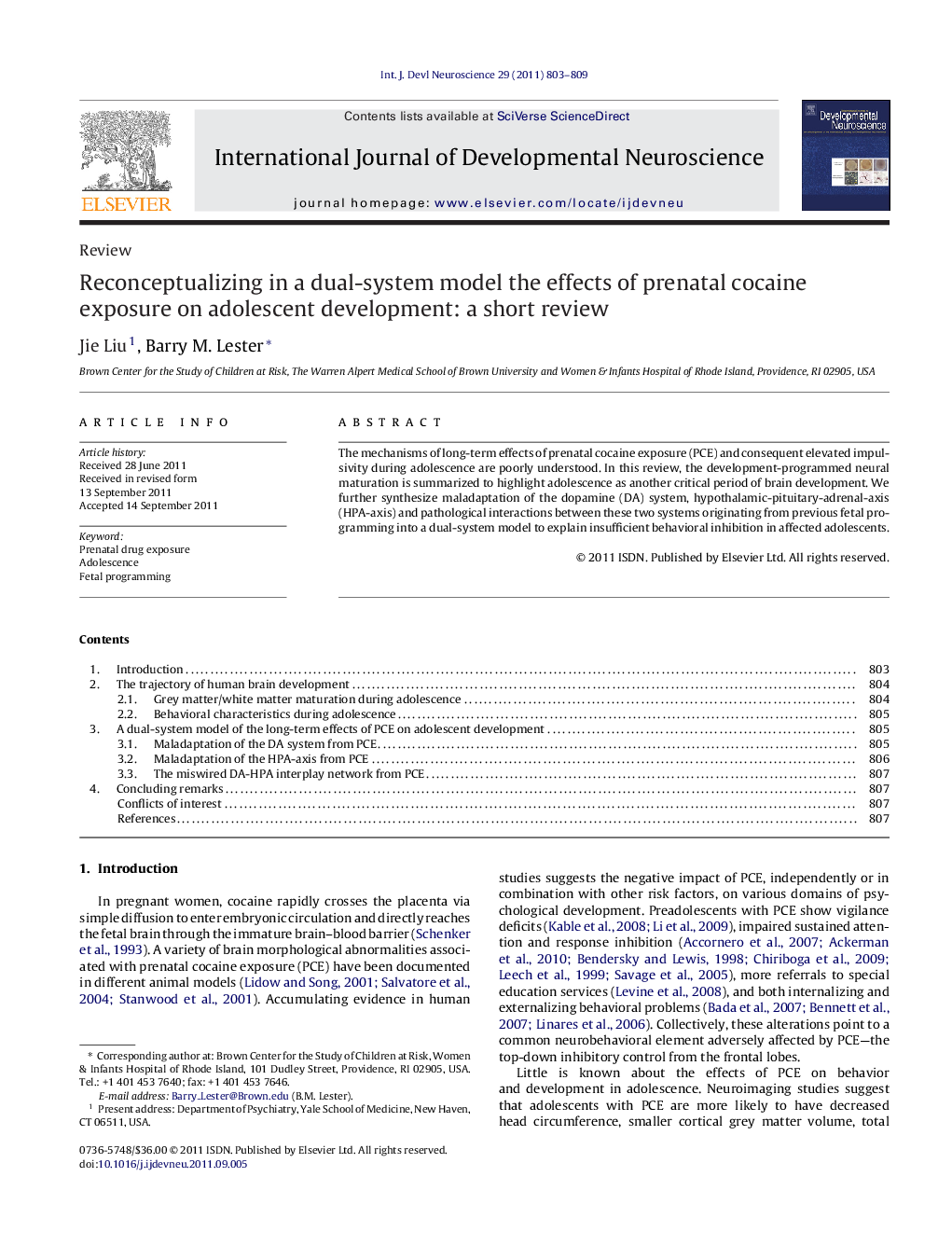| Article ID | Journal | Published Year | Pages | File Type |
|---|---|---|---|---|
| 2786310 | International Journal of Developmental Neuroscience | 2011 | 7 Pages |
The mechanisms of long-term effects of prenatal cocaine exposure (PCE) and consequent elevated impulsivity during adolescence are poorly understood. In this review, the development-programmed neural maturation is summarized to highlight adolescence as another critical period of brain development. We further synthesize maladaptation of the dopamine (DA) system, hypothalamic-pituitary-adrenal-axis (HPA-axis) and pathological interactions between these two systems originating from previous fetal programming into a dual-system model to explain insufficient behavioral inhibition in affected adolescents.
► Long-term effects of prenatal cocaine exposure remain unknown. ► We propose a dual-system model to illustrate the underlying neural mechanisms. ► The disturbed dopamine system and hypothalamic-pituitary-adrenal axis are involved. ► This can lead to elevated risk-taking in affected adolescents.
